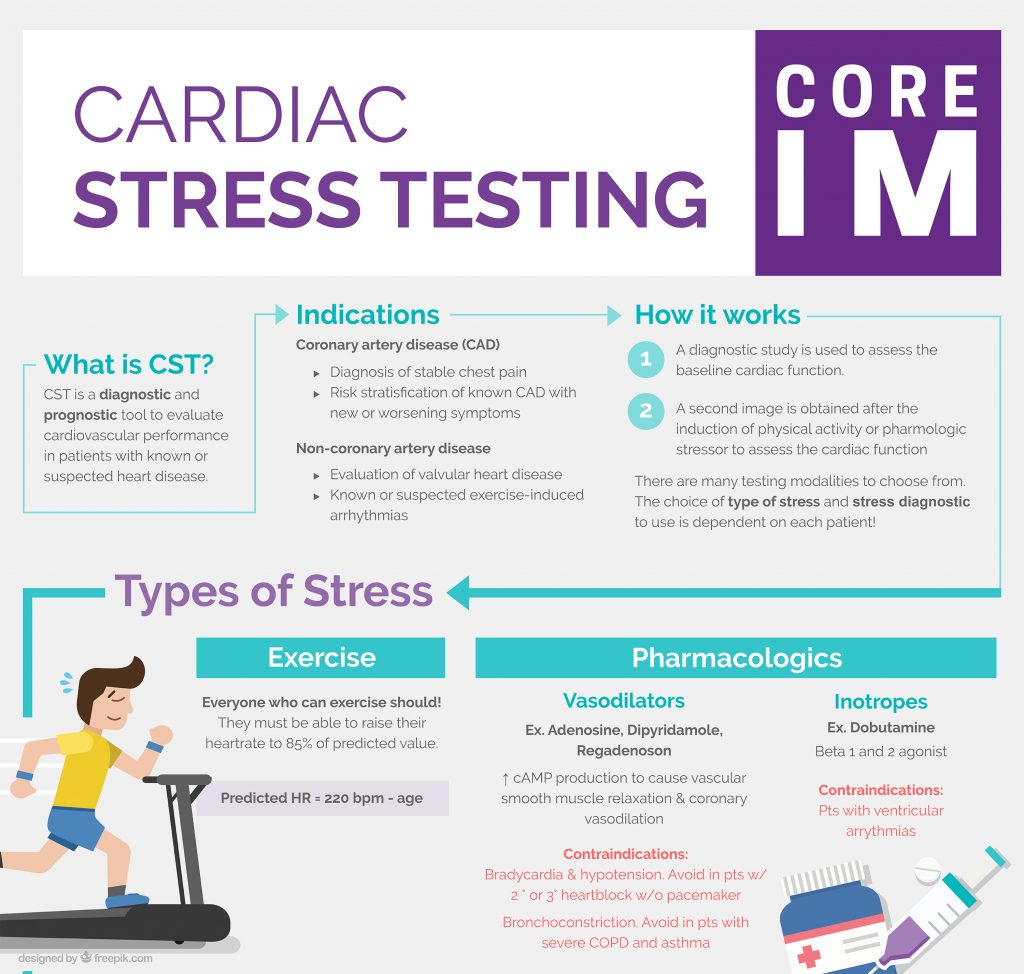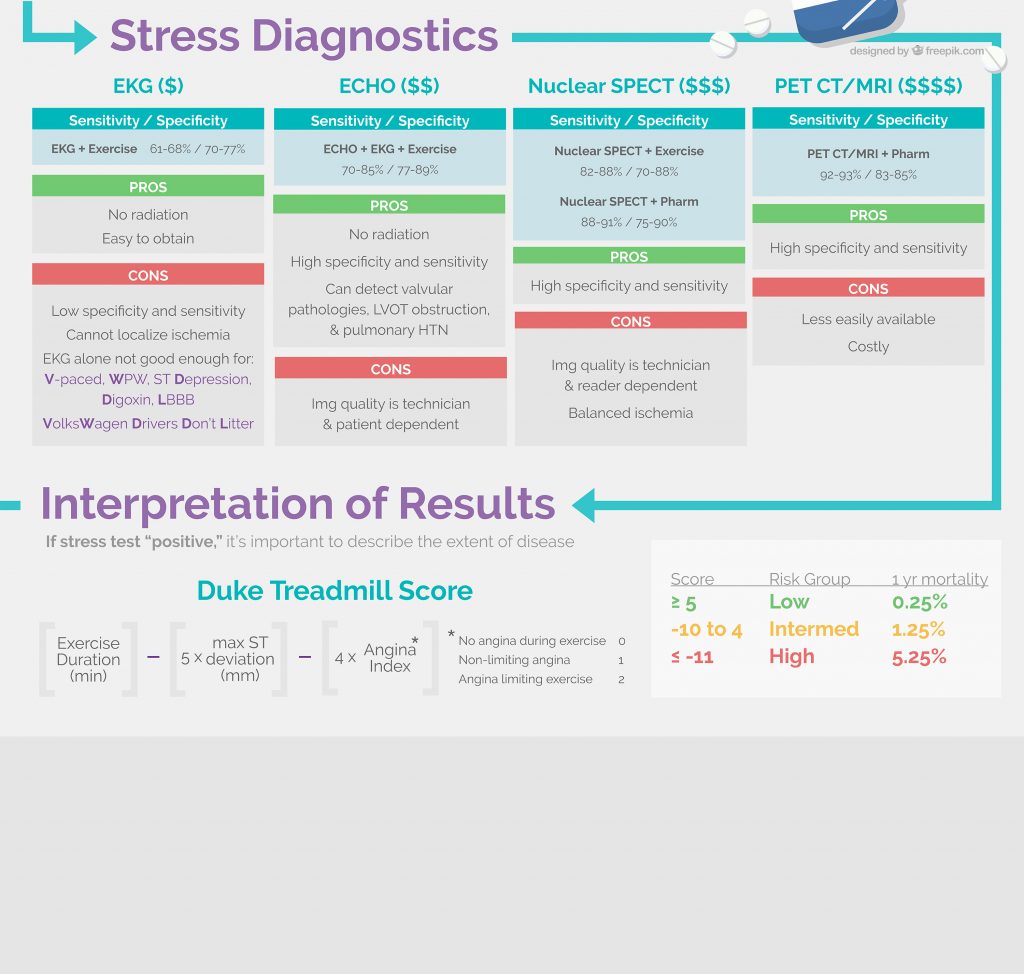Podcast: Play in new window | Download
Subscribe: RSS
For a transcript of the podcast and show notes: https://www.coreimpodcast.com/2019/04/24/stress-testing/
Time Stamps
- What are the indications for a stress test? ( 2:18)
- How to choose stress protocol in a stress test? (8:29)
- How to choose diagnostic modality in a stress test? (14:46)
- How do we interpret results from stress tests, and how should this be communicated to patients? (24:08)
- Pearl Recap (31:13)
- Is there really a big difference in risk for contrast induced nephropathy between arterial and venous contrast load? (36:02)
Thank you to Dr. Eugene Yurditsky and Dr. Gregory Katz for peer-review and input with the episode!
References
- Willett, D. L., Brickner, M. E., Appleton, C. P., Yancy, C. W., Eichhorn, E. J., & Grayburn, P. A. (1995). Usefulness of dobutamine echocardiography in distinguishing severe from nonsevere valvular aortic stenosis in patients with depressed left ventricular function and low transvalvular gradients. The American journal of cardiology, 75(2), 191-194.
- Bourque, J. M., & Beller, G. A. (2015). Value of exercise ECG for risk stratification in suspected or known CAD in the era of advanced imaging technologies. JACC: Cardiovascular Imaging, 8(11), 1309-1321.
- Heijenbrok-Kal, M. H., Fleischmann, K. E., & Hunink, M. M. (2007). Stress echocardiography, stress single-photon-emission computed tomography and electron beam computed tomography for the assessment of coronary artery disease: a meta-analysis of diagnostic performance. American heart journal, 154(3), 415-423.
- Aziz, E. F., Javed, F., Alviar, C. L., & Herzog, E. (2011). Triple vessel coronary artery disease presenting as a markedly positive stress electrocardiographic test and a negative SPECT-TL scintigram: a case of balanced ischemia. Heart international, 6(2), hi-2011.
- “ASNC imaging guidelines for SPECT nuclear
cardiology procedures: Stress, protocols,
and tracers” www.asnc.org/files/Guidelines%20and%20Quality/ASNC%20SPECT%20ProtocolsTracers%20Guidelines2016.pdf - Hamirani, Y. S., & Kramer, C. M. (2014). Cardiac MRI assessment of myocardial perfusion. Future cardiology, 10(3), 349-358.
- Perfusion, A. S. (2007). Prognostic Value of Cardiac Magnetic Resonance Stress Tests. Circulation.
- “No Real Cost Difference Between Types of Tests That Look for Heart Disease.” American College of Cardiology, 2015, www.acc.org/about-acc/press-releases/2015/03/14/13/45/no-real-cost-difference-between-types-of-tests-that-look-for-heart-disease.


